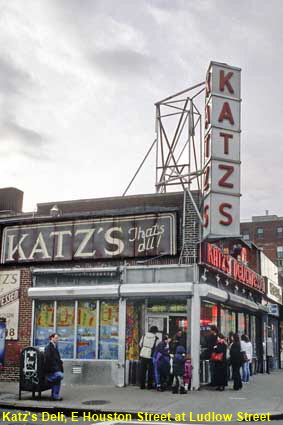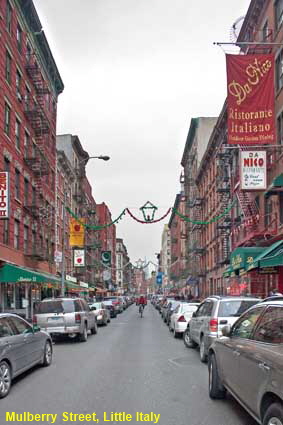Soho, Tribeca & Lower East Side
Although not as fashionable as Greenwich Village, this area has a lot of interesting sights to complement the quirky names. Tribeca stands for the Triangle below Canal Street. Soho is not related to the Soho district in London but stands for South of Houston Street. For the uninitiated Houston provides a good introduction New York pronunciation. It is not pronounced Hew-ston or Hoo-ston as in Texas, but How-ston. Pronounce it incorrectly to a taxi driver and he probably won’t know where you want to go, or in the rare cases where you get a cab driver with a good grasp of English you may be on the receiving end of a dry joke about how much the journey is likely to cost. Immigration into the US is indelibly associated with Ellis Island, but that was just the place where their entry into the country was processed. If you want to understand how they lived, worked and worshipped, this is the place to go.
Gold necklaces in shop window, Canal Street, Chinatown
Bling, bling bling. Canal street is lined with shops selling the brightest and most showy gold jewellery, often based on the 12 animals that represent the Chinese years. In the foreground here is a necklace based on the Year of the Pig that looks so heavy that the wearer might risk falling over. We didn’t stop to enquire about the price.
Katz's Deli, E Houston Street at Ludlow Street
Even the Deli’s in this area have history. Katz’s Deli is a Jewish delicatessen that goes all the way back to 1888 and it’s pastrami sandwiches and hot dogs are reckoned to be among the best in Manhattan. However it is not just pastrami sandwiches and hot dogs that bring tourists here. If the phrase ‘I’ll have what she’s having’ rings a bell, then you are on the right track. This is where Meg Ryan demonstrated a fake an orgasm in ‘When Harry met Sally’ resulting in another female diner delivering the famous line to her waiter. Unfortunately the combination of good food and movie history means that the deli gets very crowded. We looked in but concluded that we would probably die of hunger before we got to the front of the queue (or line as it is called in the US).
Fruit & Vegetable shop, Mott Street, Chinatown
The shops in Chinatown are unlike those that you find elsewhere in New York. The atmosphere is of a Chinese market rather than a western shopping street. The quality of the produce looked very good and it was noticeable that while most of the shoppers were ethnic Chinese, there were also New Yorkers of European extraction doing their shopping here.
Chinese New Year Dragon Dance, Mott Street, Chinatown
The Lower East Side is home to several ethnic groups, the largest of which is the Chinese. In Chinatown the Chinese New Year is celebrated each January with Dragon dancing in the street and firecrackers being thrown left, right and centre. The noise is immense and the crowds huge, indeed we found it difficult to get really close to the Dragon Dance that we encountered in Mott Street.
Mulberry Street, Little Italy
Chinatown has been expanding fast and this has been at the expense of adjacent neighbourhoods. Little Italy was once brimming with Italian restaurants, but now most of its streets offer a mixture of Chinese and Italian fare. Mulberry Street was the one street that we could find in January 2006 that was still was predominantly Italian in flavour. Despite the decline in the population of Italian origin, the Feast of San Gennaro is still celebrated each September with parades through the streets.
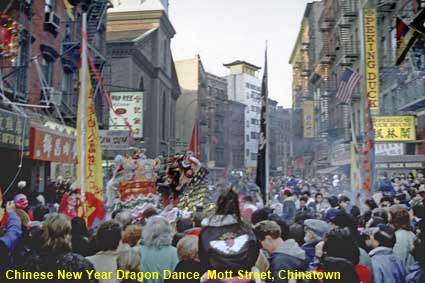
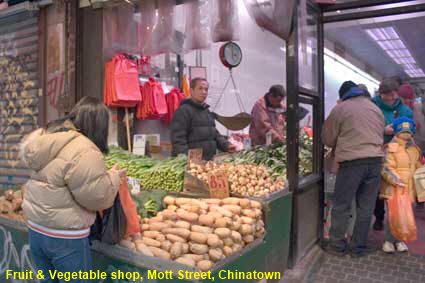
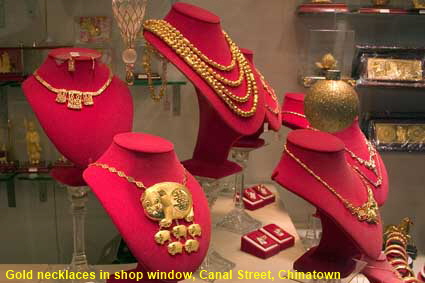
Click on Minimap to navigate
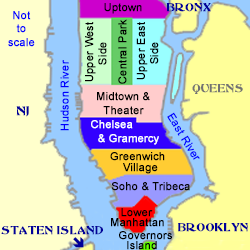
DLU180724


To move forwards or backwards through the Manhattan trail click the arrows above, or select your next destination on the Minimap.

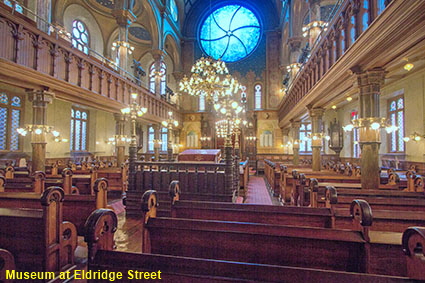
Museum at Eldridge Street
The period between 1880 and 1924 was an era of mass immigration into the USA, and around 10% of those immigrants were Jewish. Most of the Jewish immigrants arriving in New York were from Eastern Europe and the majority of them chose to settle first in the Lower East Side. The immigrants needed a place to worship and in 1887 a synagogue opened in Eldridge Street. While many of the immigrants would move on to the outer boroughs, their place was taken by new arrivals and the synagogue prospered. It all changed in 1924 when Immigration Quota Laws cut the flow of new arrivals. By the 1940s the congregation could no longer to afford to maintain the synagogue so they relocated to the much smaller lower level chapel leaving the main sanctuary derelict. In 1986 a non-sectarian organisation stepped in to preserve the building which by then was in danger of collapse. The project became known as the Museum at Eldridge Street and over the next 21 years the synagogue was stabilised, restored to its former glory and opened as a museum. During the decline of the synagogue, the original stained glass window was replaced by glass blocks. In 2010 artist Kiki Smith and architect Deborah Gans were commissioned to design and install the stained glass window visible in this picture. Click Tab 2 to see the lower level chapel.
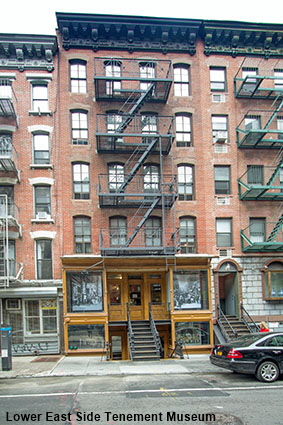
Lower East Side Tenement Museum
Having seen where some of the immigrants to New York worshipped, we now move on to where they lived. Many immigrants arrived with little money and initially found only low paid jobs, so rooms in a multi-occupancy tenement were all that they could afford. This building at 97 Orchard Street is typical of the low cost housing used by immigrants. It was built in 1863 by Prussian-born immigrant Lukas Glockner. When it was built it had no running water and only external toilets. The some rooms had windows overlooking hallways making them very dark and poorly ventilated. Outbreaks of disease such as cholera, tuberculosis and smallpox were common. Over the years New York brought in laws to improve fire safety, ventilation and sanitation in tenement blocks. The new laws resulted in changes to the tenement at 97 Orchard Street until in 1935 the landlord decided that enough was enough. Rather than meet new laws he evicted all of the tenants and boarded up the upper floors leaving just the businesses operating out of the stoop-level and basement. In 1988 Ruth J. Abram and Anita Jacobson viewed one of the business premises as a possible site for their planned museum of US immigration. When Jacobson went in search of a bathroom she stumbled upon a time capsule, a building left untouched for over 50 years. They had found their museum! The Lower East Side Tenement Museum opened its first restored apartment in 1992, the 1878 home of the German-Jewish Gumpertz family. There are now seven restored apartments plus a German beer saloon. Click Tab 2 to see a reconstructed outside privy, sadly photographs are not allowed inside the museum.
© Mike Elsden 1981 - 2025
The contents of this page may not be reproduced in full or in part without permission
